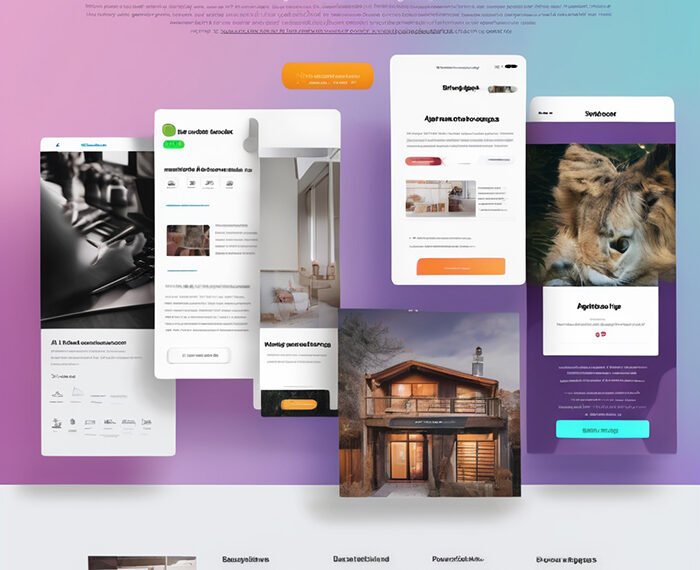In the past week, Google launched Gemini, their highly anticipated next evolution of their large language model. Gemini is designed for multimodality, allowing it to respond to text, images, video, audio, and code snippets. Through impressive demos, Gemini has showcased its ability to engage in near real-time conversations with users, sparking excitement in the tech community. However, there has also been some controversy surrounding Google’s presentation of Gemini, as it was revealed that there was extensive prompting during the demos. Despite this, Gemini still demonstrates cutting-edge logic and reasoning capabilities, positioning Google as a competitor in the large language model field.
Looking ahead, Google’s strategy with Gemini encompasses three different sizes: Nano, Pro, and Ultra. Nano is designed to run on personal devices like cell phones, while Pro powers applications like Bard on the web. Meanwhile, Ultra, the highest tier model, is yet to be released but is expected to excel in highly complex tasks. With the rise of large language models and AI assistants, the way people interact with the internet is bound to change, potentially disrupting Google’s main revenue source, Google Ads. While Google may be playing catch-up to OpenAI in the field of large language models, their advantage may lie in their own hardware, specifically their Tensor Processing Units (TPUs) used for training models. The current version of Gemini on Bard is comparable to GPT 3.5, but the Ultra model, set to be released in early 2022, holds the potential for even greater performance. Overall, the advancements in large language models like Gemini pave the way for an exciting future with more sophisticated AI and robotics.

Deepest Discount on Software Deals for Small Business Owners
Google’s Next Evolution: Introducing Gemini, a Multimodal Language Model
Overview of Gemini
Google has unveiled Gemini, the next evolution in large language models. Gemini is built for multimodality, meaning it can respond to text, images, video, audio, and code snippets. This new model showcases impressive capabilities in various tests, outperforming previous models such as GPT-4 and GPT-4 Vision.
Multimodal Capabilities of Gemini
Gemini sets itself apart with its multimodal capabilities, allowing users to prompt the model with various forms of input. This includes not only text but also images, video, audio, and even code snippets. By accommodating multiple modes of input, Gemini rivals other models like chatGPT and GPT-4 Vision, offering a more comprehensive approach to language processing.
Comparison with GPT-4 and GPT-4 Vision
When pitted against GPT-4 and GPT-4 Vision, Gemini proves to be a formidable competitor. In a range of tests, Gemini, particularly in its Ultra version, matches or even surpasses the performance of these previous models. While Gemini Ultra is not yet available and not currently powering Bard, Google’s demonstration of its capabilities indicates a promising future for large language models.
Google’s Strategy with Gemini
Introduction to Different Gemini Sizes
Google has devised a three-tier approach to the Gemini model, comprising Nano, Pro, and Ultra variations. Nano is designed to run on devices with limited computational power, catering to smartphones and other portable gadgets. Pro, the current version powering Bard, is optimized for web applications. Finally, Ultra, the most advanced tier of Gemini, is designated for highly complex tasks, offering superior performance to GPT-4 in multiple benchmarks.
Applications in AI, Robotics, and Large Language Models
Google’s strategy with Gemini extends beyond merely enhancing language models. The company aims to leverage this technology in the areas of AI and robotics as well. Gemini’s multimodal capabilities pave the way for the development of advanced robotics, enabling machines to understand their surroundings without additional input. By incorporating Gemini into their hardware and data centers, Google plans to power AI devices and support the training of large language models.

Deepest Discount on Software Deals for Small Business Owners
The Implications of Large Language Models and AI Assistants
Changing Interactions with the Internet
As large language models and AI assistants continue to advance, they are set to reshape how people interact with the internet. Traditional search engines like Google and Bing may lose prominence as users increasingly turn to AI assistants for information. This shift from search engines to answer engines or AI assistants represents a significant change in the way information is accessed and indicates a potential transformation in internet usage patterns.
Potential Threat to Google Ads
Google’s primary source of revenue, Google Ads, may encounter challenges due to the rise of AI assistants. With users relying more on AI-generated responses, the need for traditional search results and website visits diminishes. This shift poses an existential threat to Google’s advertising business model, prompting the company to pivot towards powering AI, robotics, and large language models to adapt to the changing landscape.
Google’s Position in the Large Language Model Field
Playing Catch-up to OpenAI
While Google’s Gemini showcases impressive capabilities, the company acknowledges that it is playing catch-up to OpenAI, the current leader in the large language model field. OpenAI’s models, such as GPT-4 Turbo, have set the bar high, and other companies are struggling to match their level of achievement. Google is striving to bridge this gap and potentially surpass OpenAI by investing in the development of its own hardware, particularly its Tensor Processing Units (TPUs), which provide an advantage in training large language models.
Advantage in Hardware: TPUs
Google’s ownership of TPUs gives it a unique advantage in the large language model field. TPUs are specialized chips designed specifically for the acceleration of machine learning workloads. While other industry players rely on GPUs, which are often in limited supply, Google’s TPUs offer a more efficient and powerful solution for training large language models. This hardware advantage positions Google well for future advancements in the field.

Gemini on Bard: Current and Future Performance
Comparison to GPT 3.5
The current version of Gemini, running on Bard, can be considered comparable to GPT 3.5 in terms of performance. While it may not surpass GPT-4 in every aspect, it demonstrates promising capabilities and signifies a significant step forward in language processing. Gemini’s multimodal abilities enhance its performance, making it a compelling option for various applications.
Expectations for the Ultra Model
Although Gemini Ultra is yet to be released, expectations are high regarding its performance. Set to launch in the first quarter of next year, the Ultra model is anticipated to outperform previous iterations, including GPT-4, in terms of complexity and multimodal capabilities. Its release will shed light on Google’s progress in catching up to OpenAI and potentially surpassing them in the large language model domain.
Conclusion
Gemini, Google’s multimodal language model, represents a significant evolution in the field of large language models. With its impressive capabilities, Gemini sets a new standard for processing text, images, video, audio, and code snippets. Google’s strategic approach to Gemini, along with its investment in hardware, positions the company to compete with and potentially surpass industry leaders like OpenAI. As the use of large language models and AI assistants continues to grow, the way people interact with the internet is expected to change, impacting traditional search engines and advertising models. The future holds exciting possibilities as technology advances, paving the way for advanced robotics and groundbreaking applications in AI.
Deepest Discount on Software Deals for Small Business Owners









